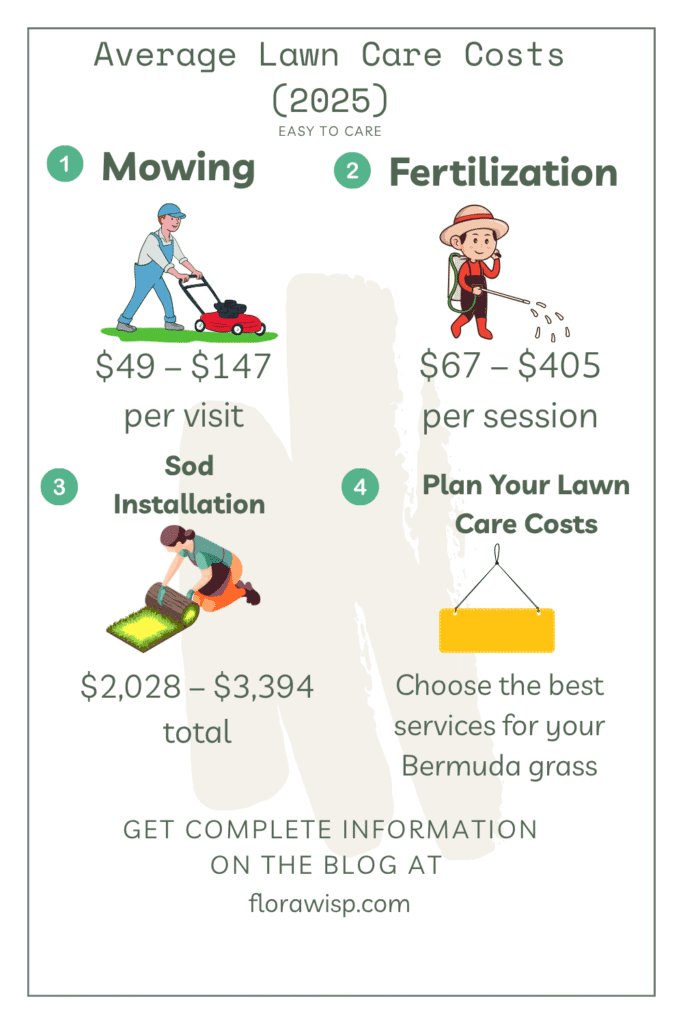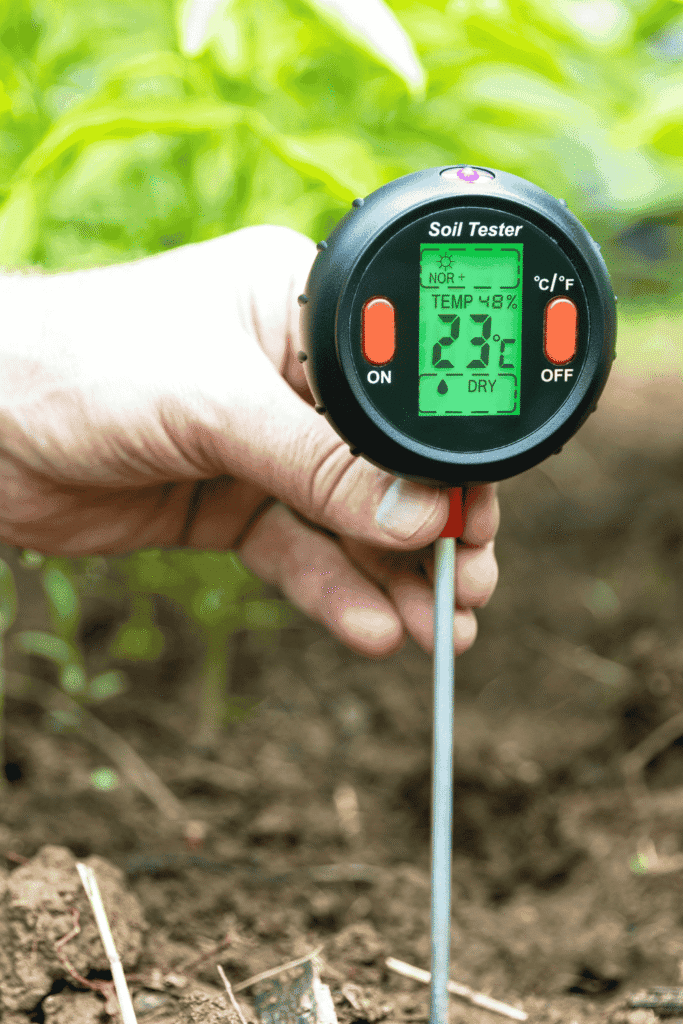Lawn care cost in 2025 varies widely depending on yard size, service frequency, grass type, and the scope of maintenance required, with average monthly costs ranging between $70 and $200 for standard packages that include mowing, trimming, fertilization, and weed control. Basic lawn mowing services often start around $49 per visit, while complete lawn care services, including aeration, pest treatments, and seasonal cleanups, can raise the bill to $150–$400 per month. Homeowners often face extra expenses such as equipment repairs like bills on the spot lawn mower repair or soil testing and amendments, which influence the total cost.
Professional lawn care pricing is typically higher in urban and high-demand regions, but bundled plans often provide better long-term value compared to paying per visit. Choosing between DIY maintenance and hiring experts depends on equipment costs, time availability, and desired results; while DIY can save upfront, professional providers ensure healthier lawns and early problem detection, reducing future expenses. Bermuda grass lawns, which thrive in warm climates, may require additional seasonal fertilization and aeration but can lower overall costs due to their drought tolerance. By comparing average lawn care costs per month, identifying hidden fees, and selecting the right lawn service provider, homeowners can balance quality lawn care with budget-friendly solutions while improving curb appeal and property value.
For year-round tips, explore our evergreen grass care guide to maintain a lush, healthy lawn effortlessly.
In This Article
What Is the Average Lawn Care Cost in 2025?

Knowing the average lawn care cost in 2025 is crucial for homeowners planning their yard maintenance budget. Lawn care services range from simple tasks like mowing to more extensive treatments such as fertilization or sod installation. On average, homeowners can expect to pay anywhere from $49 for basic lawn mowing to upwards of $3,394 for large-scale projects like sod installation.
In my experience as a gardener, I’ve found that investing in quality lawn care services not only enhances the aesthetic appeal of your yard but also contributes to the long-term health of your lawn.
Cost Breakdown of Common Lawn Care Services
| Lawn Care Service | Average Cost Range | Description |
| Mowing | $49 – $147 | Basic lawn cutting, usually per visit |
| Fertilization | $67 – $405 | Nutrient treatments to promote growth |
| Weed Control | $50 – $210 | Chemical or manual removal of weeds |
| Aeration | $107 – $202 | Soil loosening to improve root growth |
| Sod Installation | $2,028 – $3,394 | Instant lawn with pre-grown grass rolls |
Why Location Impacts Lawn Care Pricing
Regional variations in lawn care costs depend on climate, local labor rates, soil types, and grass species common to the area. For example, lawn maintenance in northern states with shorter growing seasons may cost less than in southern regions where year-round upkeep is necessary. Additionally, urban areas tend to have higher professional lawn care pricing due to increased demand and cost of living.
Understanding these cost ranges and regional influences helps homeowners answer the question: how much do lawn care services cost in their area, ensuring smarter budgeting and service choices.
How Much Is Lawn Care Per Month?
When budgeting for lawn upkeep, many homeowners wonder, how much is lawn care per month? Monthly lawn care maintenance packages typically range between $70 and $200, depending on the size of your yard, the scope of services included, and your location. These packages often bundle mowing, fertilization, weed control, and seasonal treatments into one predictable monthly fee. LawnStarter reports that the average monthly lawn care cost ranges between $100 and $410, influenced by factors such as yard size and service frequency. LawnStarter
Typical Monthly Lawn Care Packages
| Package Type | Services Included | Average Monthly Cost |
| Basic Maintenance | Lawn mowing, edging, debris removal | $70 – $100 |
| Standard Care | Basic + fertilization, weed control | $100 – $150 |
| Premium Package | Standard + aeration, pest control, seasonal treatments | $150 – $200 |
Why Choose Regular Maintenance Contracts?
Regular monthly contracts offer consistent lawn health and better long-term results compared to one-time services. Frequent care prevents issues like patchy grass or weed overgrowth and helps maintain curb appeal. Plus, lawn care companies often provide discounted rates on monthly plans versus paying per visit.
Cost-Saving Tips for Monthly Lawn Care Plans
- Opt for bundled services to avoid paying separately for each treatment.
- Schedule services during peak growing seasons to maximize value.
- Maintain your lawn between visits with DIY grass care tips like proper watering and trimming.
Understanding monthly lawn care costs and the benefits of contracts can help you keep your lawn healthy while managing expenses effectively.
Factors That Affect Lawn Care Cost
Understanding how much lawn care costs requires considering several critical factors that influence pricing. The total lawn care cost can vary widely based on your lawn’s unique characteristics, local conditions, and the service provider’s expertise.
Key Factors Impacting Lawn Care Pricing
| Factor | Impact on Cost | Explanation |
| Lawn Size and Terrain | Larger lawns and uneven or sloped terrain cost more | More time and equipment needed to mow and treat complex areas |
| Type and Condition of Lawn | Different grass types require tailored care | For example, Bermuda grass needs specialized treatments for best growth and pest control |
| Obstacles in Yard | Trees, roots, fences increase difficulty | More manual labor and equipment adjustments can increase labor costs |
| Provider Expertise and Quality | Experienced professionals may charge premium rates | Higher quality service can mean better results and long-term savings |
| Seasonal Needs and Timing | Prices can spike during peak seasons | Early spring and fall treatments often cost more due to demand and urgency |
Bermuda Grass Specifics
If you have a Bermuda grass lawn, you might face additional costs for aeration, dethatching, and specialized fertilization because this grass thrives in warm climates but requires consistent care to avoid weeds and pests.
By considering these factors, you’ll better understand the components behind lawn care cost and why estimates vary so much from one property to another. This knowledge helps you budget more accurately and choose the right service provider for your lawn’s specific needs.
Eco-Friendly and Sustainable Lawn Care Options
With growing awareness about environmental impact, many homeowners are exploring eco-friendly lawn care solutions. These sustainable choices not only support a healthier planet but can also influence your overall lawn care cost.
Key Green Lawn Care Methods
- Organic Fertilizers and Natural Pest Control: These options avoid harsh chemicals, using compost, bio-fertilizers, and beneficial insects to promote lawn health. Though sometimes priced higher upfront, they reduce long-term damage to soil and water.
- Water-Saving Irrigation Systems: Smart irrigation controllers and drip systems minimize water waste, ideal for drought-prone areas. Using drought-resistant grasses like Bermuda or Buffalo grass also cuts watering needs dramatically.
Transitioning to organic lawn care methods, such as using compost and natural pest control, has been beneficial in promoting a healthier ecosystem in my garden
Cost Comparison: Green vs Traditional Lawn Care
| Lawn Care Method | Average Cost per Treatment | Environmental Impact | Long-Term Cost Considerations |
| Traditional Chemical Fertilizers & Pesticides | $50 – $100 | Potential runoff, soil damage | May require repeated treatments and remediation costs |
| Organic Fertilizers & Natural Pest Control | $70 – $130 | Minimal pollution | Encourages healthy soil, reduces future input costs |
| Conventional Irrigation Systems | $30 – $60/month | Higher water consumption | Potentially higher water bills |
| Water-Saving Irrigation & Drought-Resistant Grass | $40 – $80/month | Conserves water | Lower water bills, sustainable long-term |
Lawnganics notes that their organic lawn care services are competitively priced, aligning closely with the cost of synthetic fertilizers and conventional lawn care solutions.Lawnganics+2.
While how much lawn care services cost with eco-friendly options can sometimes be slightly higher upfront, the environmental benefits and potential long-term savings make them a smart investment for many homeowners.
Choosing sustainable lawn care aligns with responsible landscaping while balancing lawn care cost effectively.
How to Care for Bermuda Grass Lawn
Bermuda grass is a popular choice for warm climates due to its resilience and lush green appearance. Understanding how to care for Bermuda grass lawn ensures you maintain its vibrant health while managing your lawn care cost effectively.
Characteristics of Bermuda Grass
This grass type thrives in full sun and well-drained soil. It spreads quickly via runners, making it excellent for covering large areas and recovering from damage.
Best Practices for Bermuda Grass Care
- Watering: Bermuda grass requires about 1 to 1.25 inches of water weekly during the growing season. Deep, infrequent watering encourages strong roots while preventing overwatering that leads to disease.
- Mowing: Maintain a height of 1 to 2 inches for optimal growth. Frequent mowing (once per week) promotes denser turf and helps control weeds.
- Fertilization: Apply a nitrogen-rich fertilizer every 6 to 8 weeks in spring through early fall. Avoid over-fertilizing, which increases lawn maintenance cost unnecessarily and risks lawn stress.
Seasonal Bermuda Lawn Care Schedule
| Season | Care Tasks |
| Spring | Fertilize, aerate, overseed if needed |
| Summer | Regular mowing, deep watering |
| Fall | Reduce watering, apply winterizer |
| Winter | Minimal care, keep debris cleared |
Common Problems and Solutions
Watch for pests like grubs and diseases such as leaf spot. Timely lawn treatments can minimize repair costs.
Caring for Bermuda grass requires consistent attention. I’ve observed that regular mowing and proper fertilization significantly improve its resilience and appearance
Cost Implications
Compared to cool-season grasses, Bermuda’s drought tolerance and fast growth can lower lawn care cost by reducing water use and maintenance frequency. However, proper seasonal care is vital to avoid costly damage repairs.
Proper knowledge of how to care for Bermuda grass lawn leads to a beautiful, cost-effective yard all year round.
DIY vs Professional Lawn Care: What’s the Cost Difference?
Deciding between DIY lawn care and hiring professionals significantly impacts your overall lawn care cost. Understanding both options helps you choose what fits your budget, time, and lawn needs best.
Essential Lawn Care Equipment Costs
To maintain your lawn yourself, you’ll need equipment such as:
| Equipment | Average Cost (USD) |
| Lawn mower | $150 – $500 |
| Leaf blower | $50 – $200 |
| Fertilizer spreader | $40 – $100 |
| Sprayer for treatments | $30 – $80 |
These upfront costs add to your DIY expenses, plus ongoing maintenance like fuel and repairs.
Time and Effort Considerations
DIY lawn care demands a significant time investment weekly mowing, fertilizing, watering, and pest control. For busy homeowners, this can become overwhelming and lead to inconsistent lawn health, potentially increasing future lawn treatment prices.
When Hiring a Pro Saves Money in the Long Run
Professional lawn care providers bring expertise, specialized tools, and efficient scheduling. They often identify problems early, preventing costly damage and reducing lawn mowing cost over time. Many also offer bundled packages at competitive rates, making professional service a cost-effective option.
Tips for Balancing DIY with Professional Services
A hybrid approach can maximize savings and results. For example, handle regular mowing yourself but schedule seasonal fertilization or pest control with a pro. This strategy controls lawn care cost while ensuring quality lawn maintenance.
Knowing the true cost difference between DIY and professional options empowers you to make smarter lawn care choices.
Hidden and Extra Costs You Should Know About
When budgeting for lawn care costs, it’s important to be aware of hidden and extra expenses that can unexpectedly increase your bill. These costs often go overlooked by homeowners but can significantly impact your overall spending.
Soil Testing and Amendments

Healthy soil is the foundation of a thriving lawn. Many professional services include or recommend soil testing to identify nutrient deficiencies or pH imbalances. Amendments such as lime, compost, or specialized fertilizers may be needed, adding to your lawn treatment price.
Pest and Disease Treatments
Unseen pests and diseases can quickly damage your grass. Targeted treatments might require additional visits or products outside of a standard package, increasing lawn care cost. Regular inspections by professionals can catch these issues early, saving money over time.
HomeGuide indicates that lawn care costs can range from $90 to $200 per month for basic services, with full-service plans reaching $200 to $400 monthly, depending on yard size and specific services included. HomeGuide
Equipment Rental or Additional Labor Fees
If your lawn has difficult terrain or obstacles like trees and fences, providers may charge extra for specialized equipment or extra labor hours. Even some professional lawn care pricing models include fees for seasonal cleanups or debris removal.
Seasonal Spikes and Emergency Services
Lawn care isn’t always predictable. Certain seasons require more intensive care, causing costs to spike. Plus, emergency services like storm damage cleanup or urgent pest control often come with premium charges.
Understanding these hidden costs helps you avoid surprises and plan your lawn care budget wisely.
How to Choose a Lawn Care Service Provider
Choosing the right lawn care service provider can make a big difference in the quality of your lawn and your overall lawn care cost. To ensure you get the best value, consider more than just the price, look for qualifications, reliability, and service scope.
Certifications and Guarantees Matter
Professional providers often carry certifications from organizations like the National Association of Landscape Professionals (NALP) or local state licensing boards. These certifications reflect training in lawn maintenance best practices and safe chemical use. Also, inquire about guarantees: does the company offer service warranties or satisfaction guarantees? This can save you money and headaches if issues arise.
Important Questions to Ask
Before hiring, ask about:
- The specific services included in their price
- How frequently they perform treatments or mowing
- Their approach to pest control and fertilization
- Whether they provide customized plans based on lawn type and size
- If extra fees apply for obstacles or difficult terrain
Comparing Quotes Beyond Price
Quotes can vary widely due to service levels, expertise, and included treatments. A lower price may mean fewer visits or less comprehensive care, ultimately costing more to fix problems later. Look at what’s included and the provider’s reputation to get the best balance of cost and quality.
Taking time to evaluate providers carefully helps control your lawn care cost while ensuring your lawn gets professional, effective care.
FAQs
Q. What is included in basic lawn care service?
Basic lawn care typically includes mowing, edging, and grass trimming. Some services may also offer fertilization and weed control as part of their standard package, which impacts your overall lawn care cost.
Q. How often should I get lawn care services?
Most lawns benefit from weekly or biweekly visits during the growing season to maintain a healthy, vibrant appearance. Regular maintenance helps avoid costly repairs later, affecting how much lawn care is per month.
Q. Can lawn care improve home value?
Absolutely. A well-maintained lawn enhances curb appeal and can increase your property’s market value. Investing in professional lawn care can offer a strong return by attracting buyers and improving neighborhood aesthetics.
Q. When is the best time to water a lawn?
Early morning watering is ideal to minimize evaporation and fungal growth. Proper watering supports lawn health and can reduce unnecessary spending on treatments and repairs.
Q. How to measure lawn size for accurate cost estimates?
Measure your lawn’s length and width using a tape or digital app, then multiply to get the square footage. Accurate measurements help providers give precise quotes and control your lawn care cost.
Conclusion:
Understanding your lawn care cost helps you make smarter decisions and get the most from your investment. From knowing how much lawn care costs on average to choosing the right monthly plan, every lawn is unique and requires tailored care. Factors like lawn size, grass type, and seasonal needs impact both cost and care strategies.
Opting for eco-friendly options or professional services can improve your lawn’s health and reduce long-term expenses. Whether you have Bermuda grass or another variety, customized care plans will save money and enhance results.
To get started, request local quotes and compare services carefully, not just prices to find trusted providers who offer quality and value. Smart lawn care begins with knowledge, planning, and timely action. Start today to enjoy a lush, healthy lawn without overspending.
Gardener, M.Sc. Horticulture
Elara Bennet is a gardening writer from Austin, TX, passionate about sustainable lawns and blooms. Read full bio →








